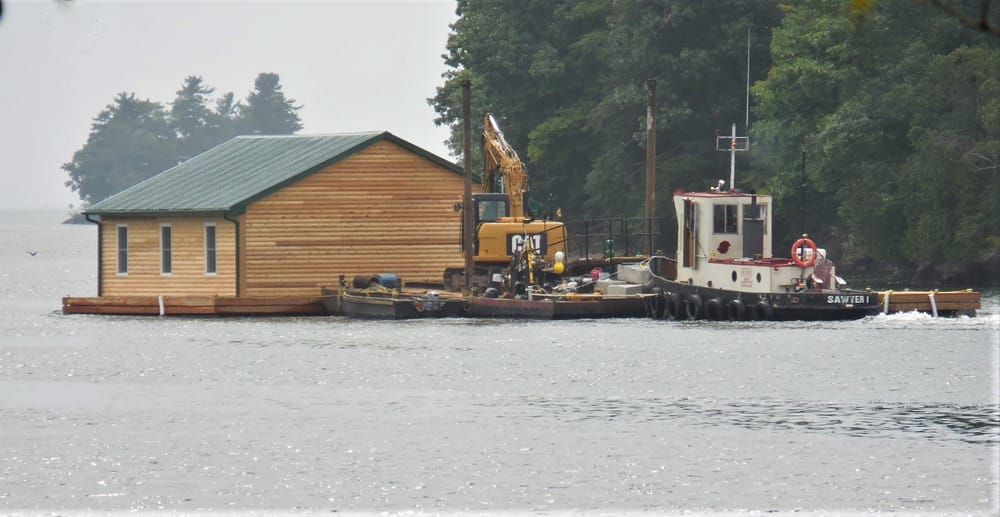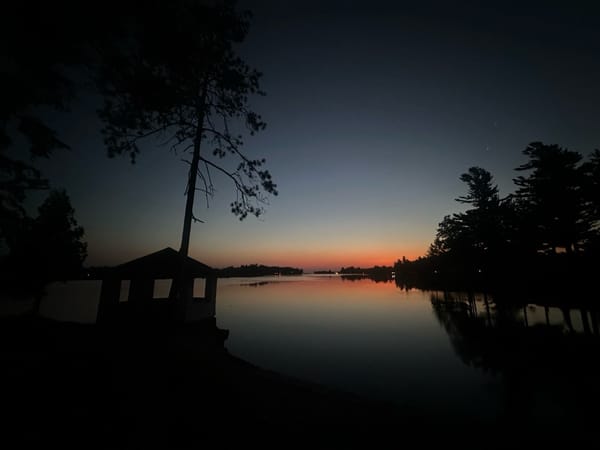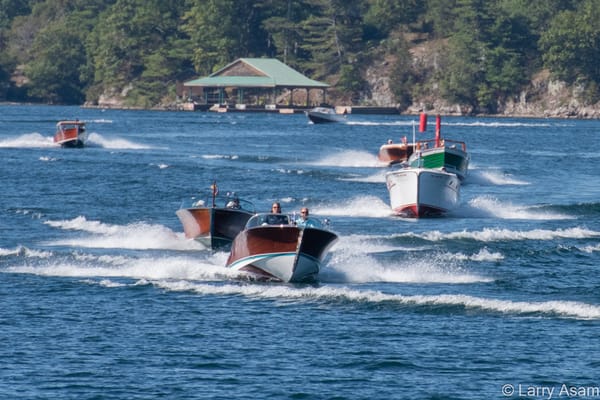Album of Working Boats!
by: Winifred McGowan
The St. Lawrence River is our highway, the road that provides access to the many islands. It also is the much longer connection between the ocean and the Great Lakes via the St. Lawrence Seaway.
People who don't know the River personally may not realize the different way islanders have to get major deliveries for work to be done. There are no moving vans or Amazon Prime trucks driving up. Instead, a barge or smaller boat comes out. I can't tell you how often friends, knowing we have a small island and wanting to know how we get to it, ask if there is a bridge or ferry to our island. Well ... no (of course not!). Those serve much larger islands.
Here is an album of some of the larger barges that facilitate work being done in the islands. There have been a lot of them plying the waters of the Admiralty Group in recent years. What would we do without them?
Off in the distance, what is that different sound you hear? No, not a jet ski, a hoverboard, or a cigarette boat, not the aerial tour's helicopter or plane, probably not a tour boat . . . but what? Maybe a work barge? Where are they going? What work will be done?
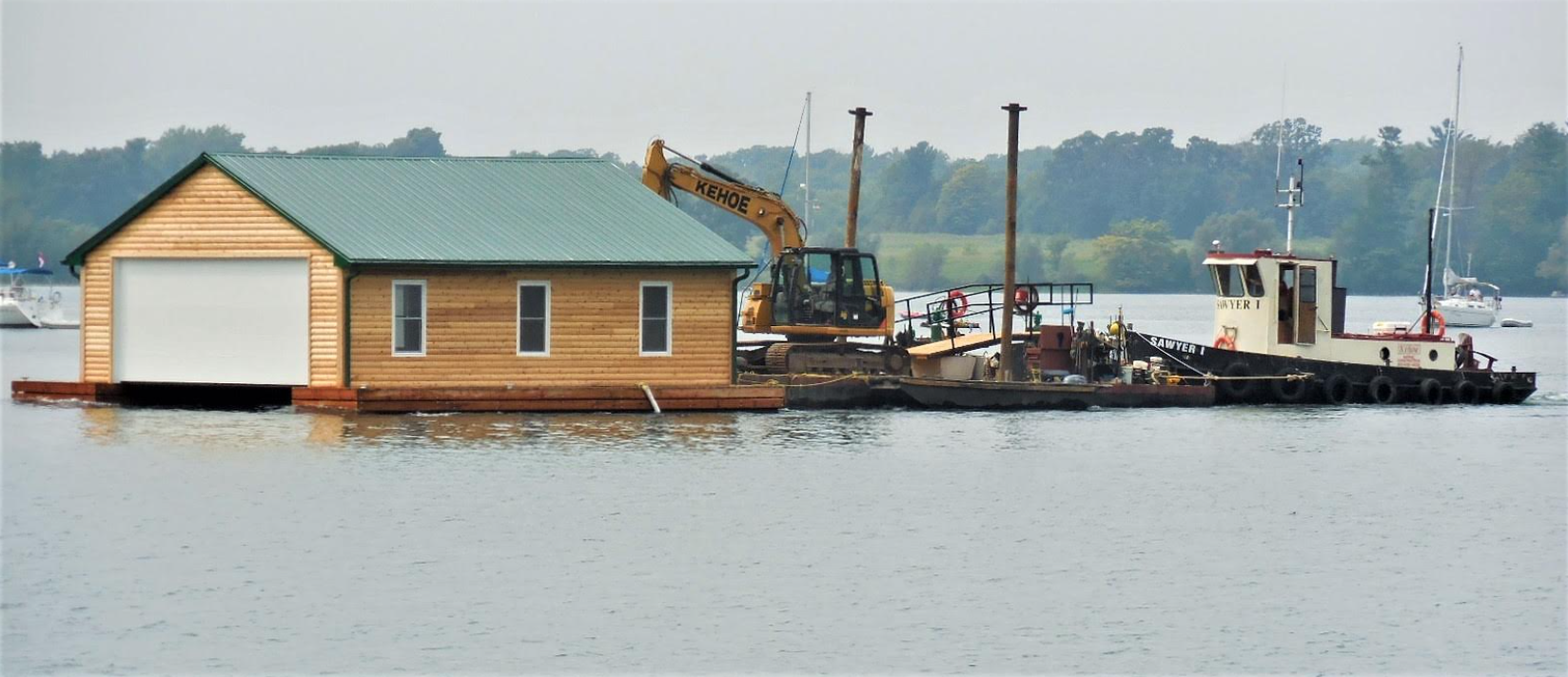
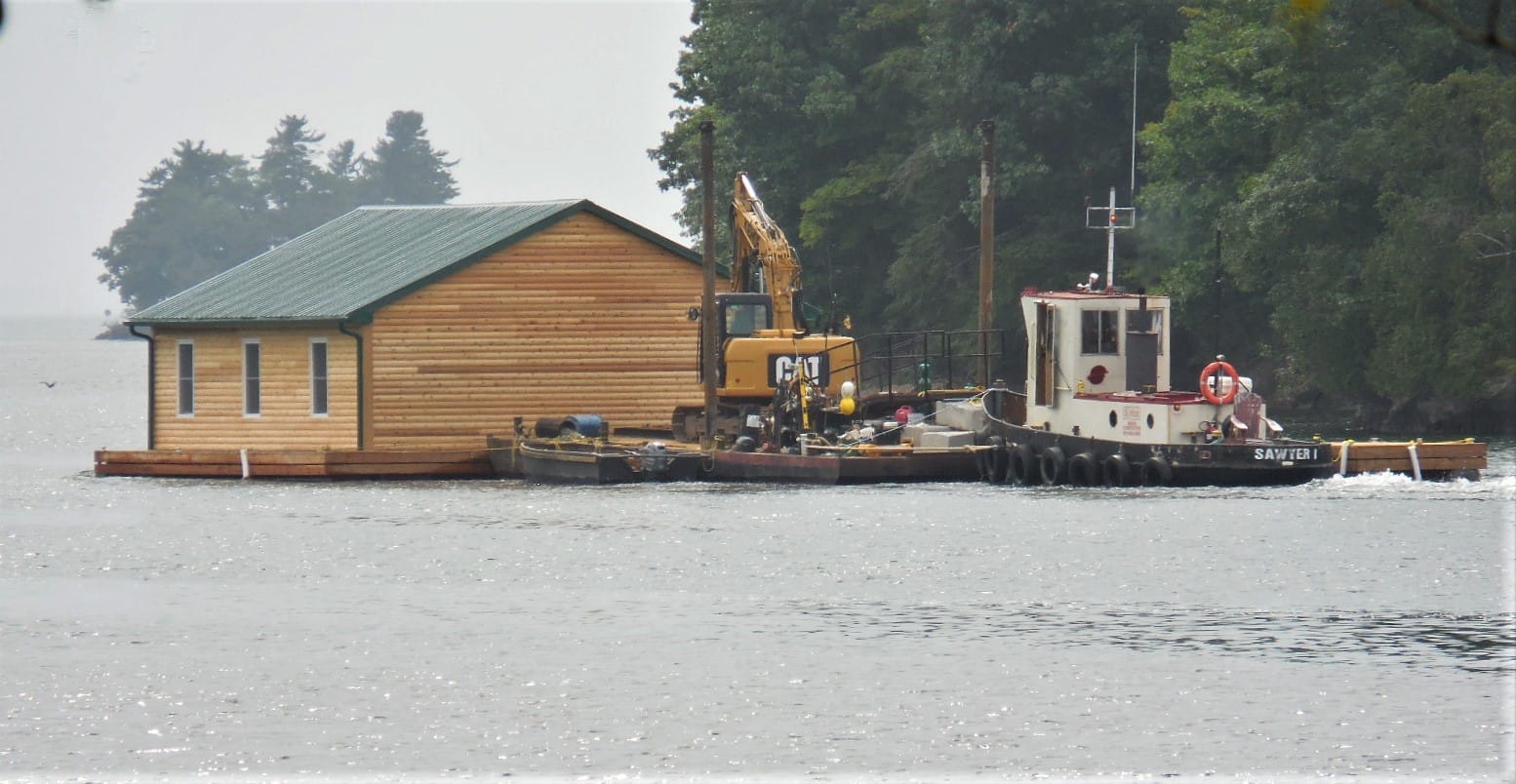
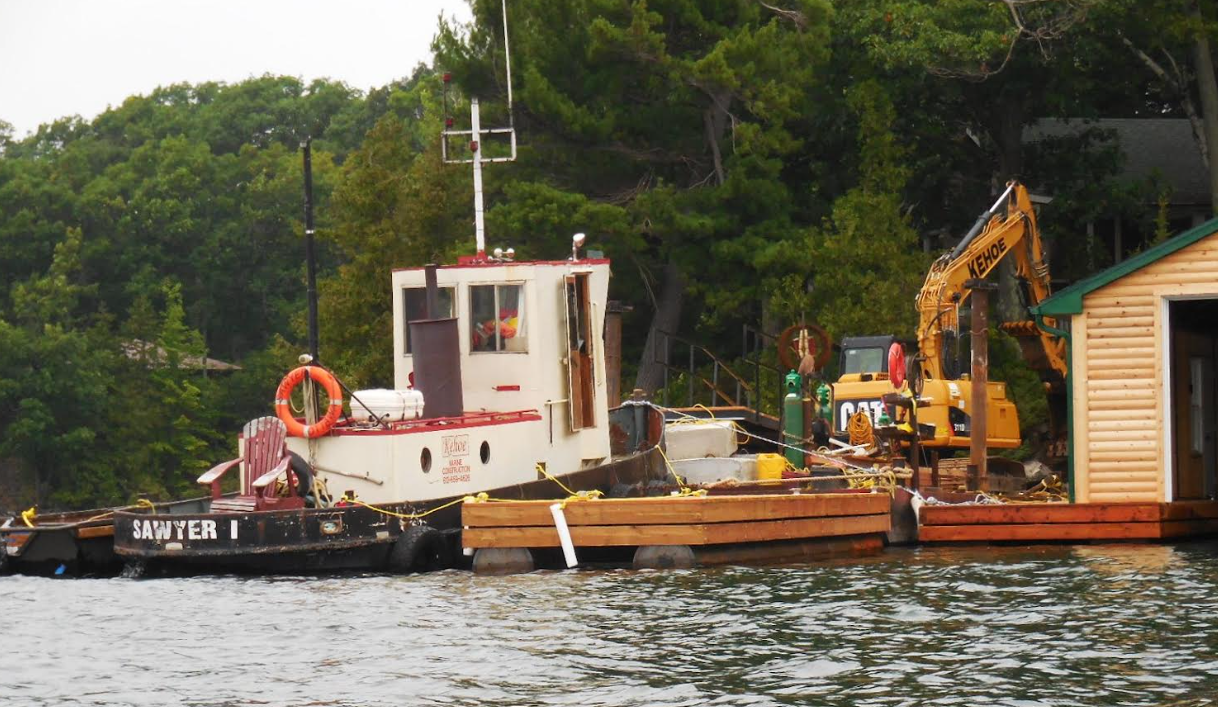
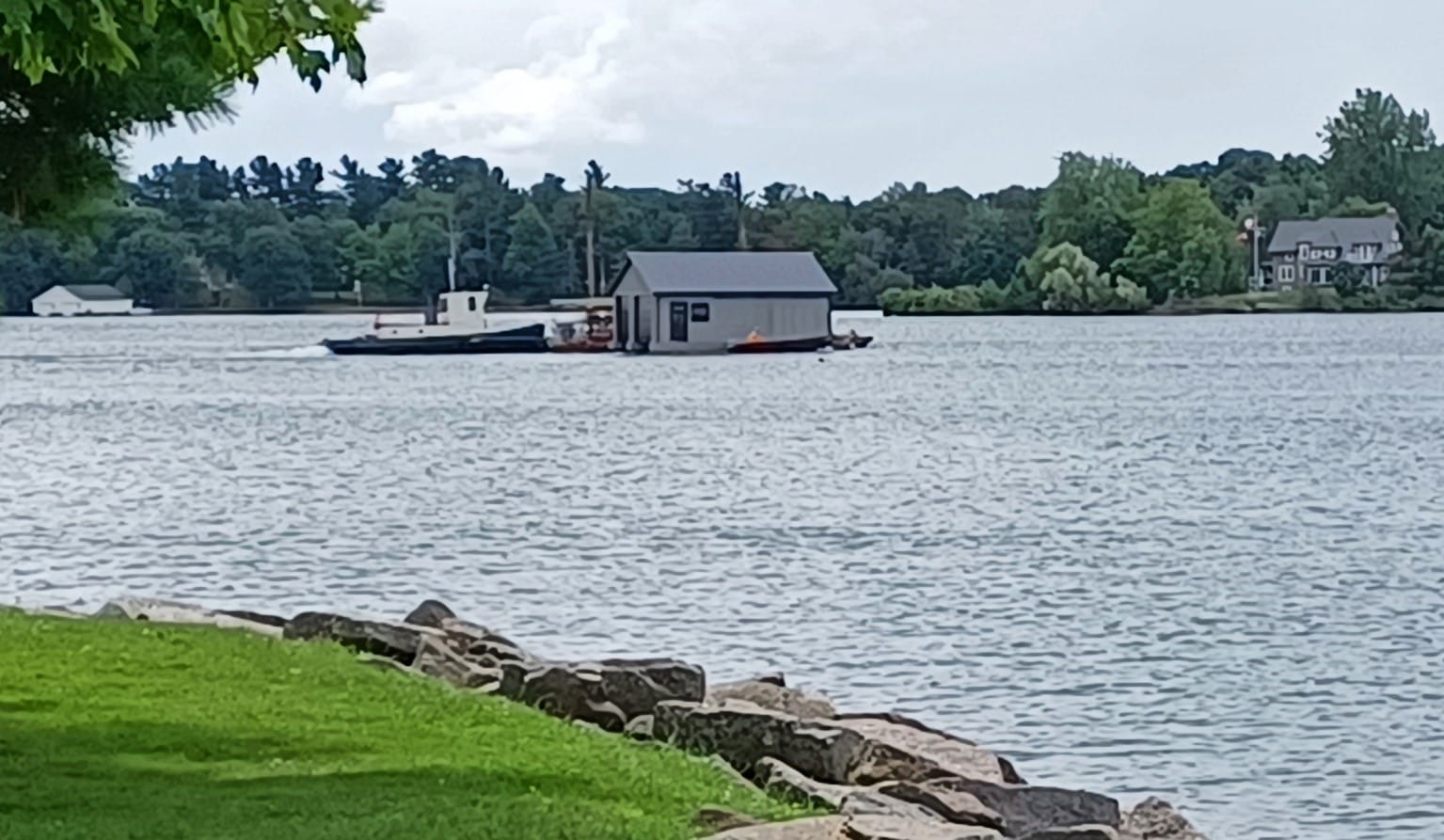
As convenient as Amazon? [Photos by Winifred McGowan ©2025]
Imagine looking out on a drizzly day and seeing a boathouse coming straight toward your island before it curved off into Wanderer's Channel. Yikes! Some deliveries are bigger than others! Good thing it wasn't windy or the tugboat would have had a lot harder job. This is an event of a lifetime. Next day was a bit windy, but with some poking around I found the floating boathouse's new home and watched some of the work needed to install it. Fast forward six years and another floating boathouse went by the Joel Stone Park – so, not an event of a lifetime, but still an unusual event.
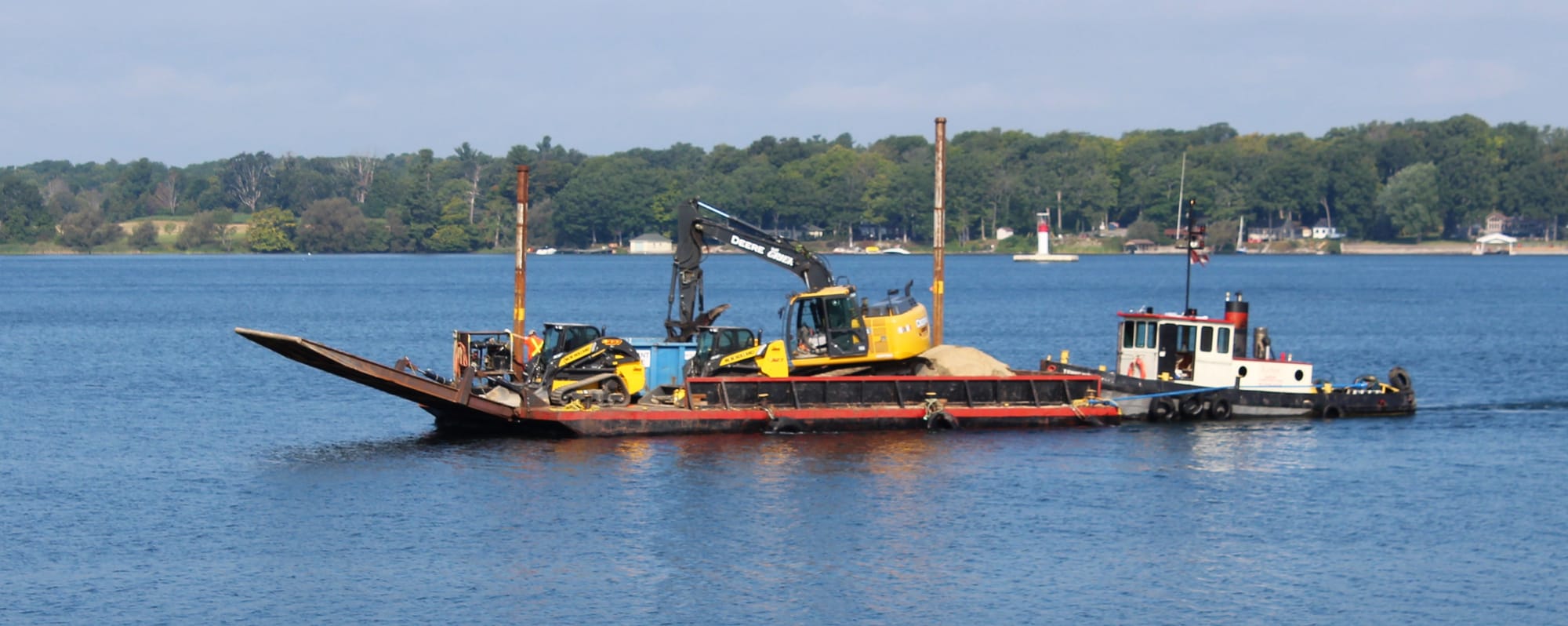
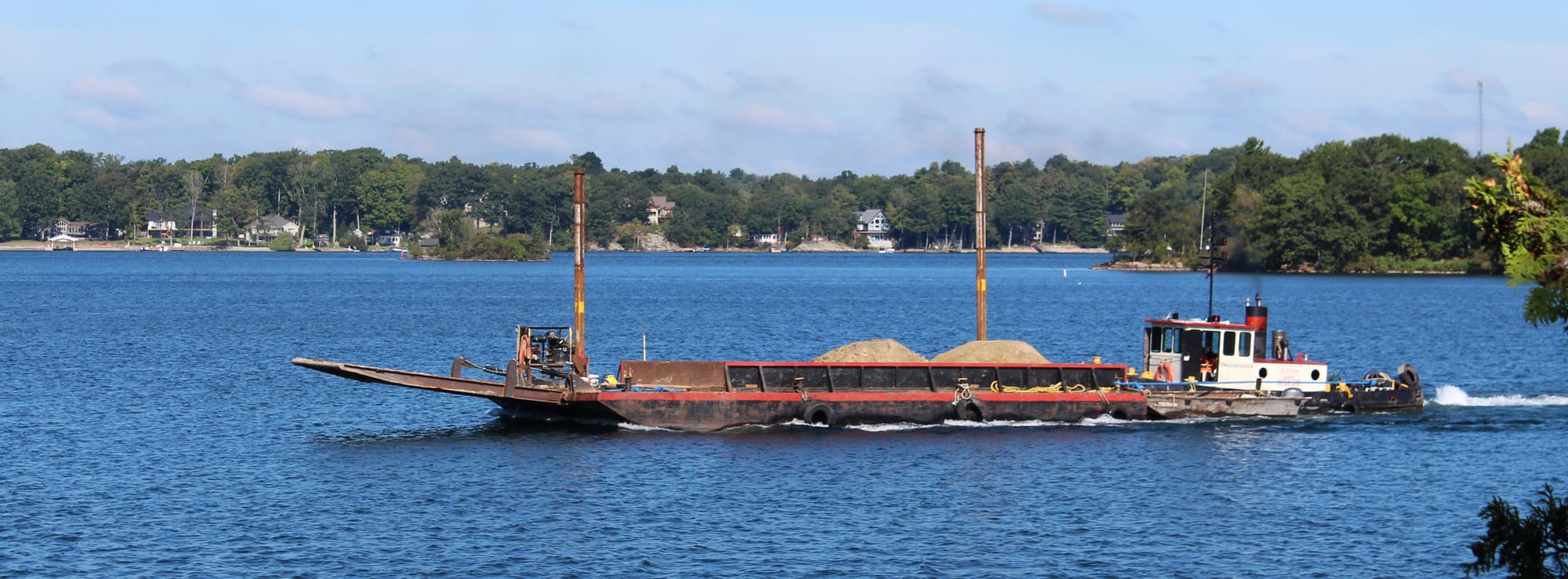

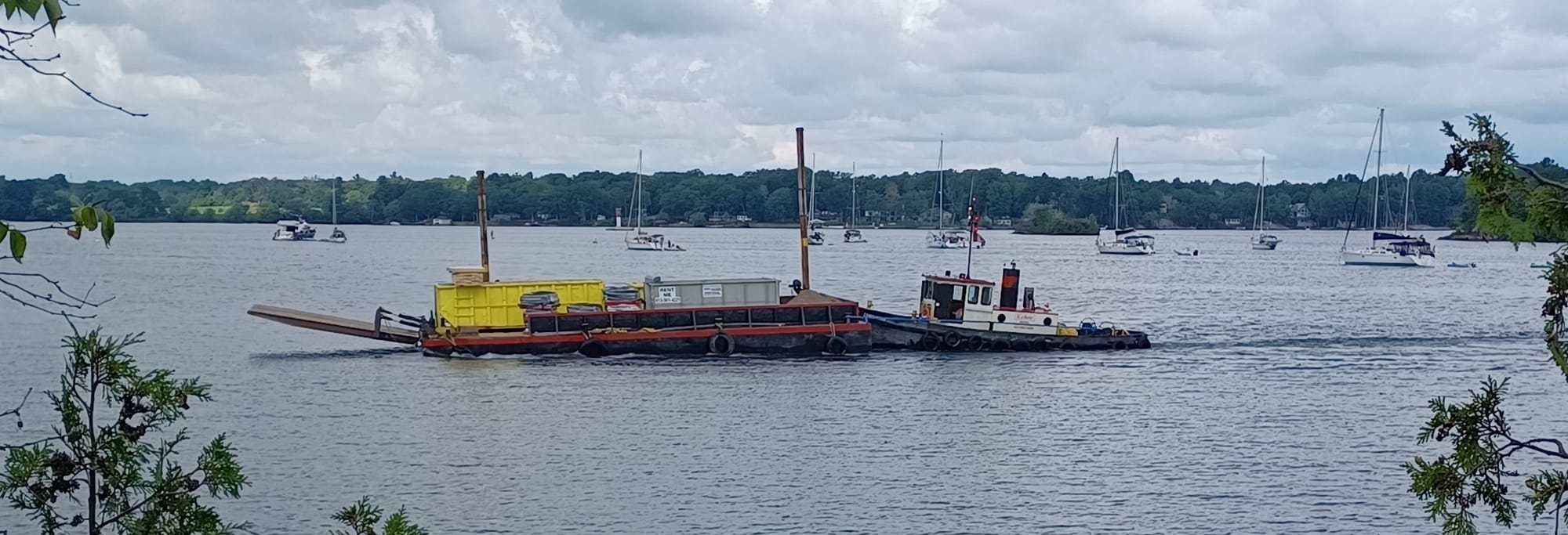
This supply barge brought almost everything to and from the building site! [Photos by Winifred McGowan ©2025]
This supply barge brought dirt as well as bobcats and an excavator to make a haul road and to raze and remove an old house. The fellows were well coordinated: it took about an hour to land, haul the dirt and other supplies from the barge up the hill, haul the 3 dumpsters up the hill, fill them, and drag them back onto the barge, raise the barge's stabilizing poles, and leave. How impressive is that?! The barge continued to bring supplies for building a replacement house and septic system . . . so many, many trips.
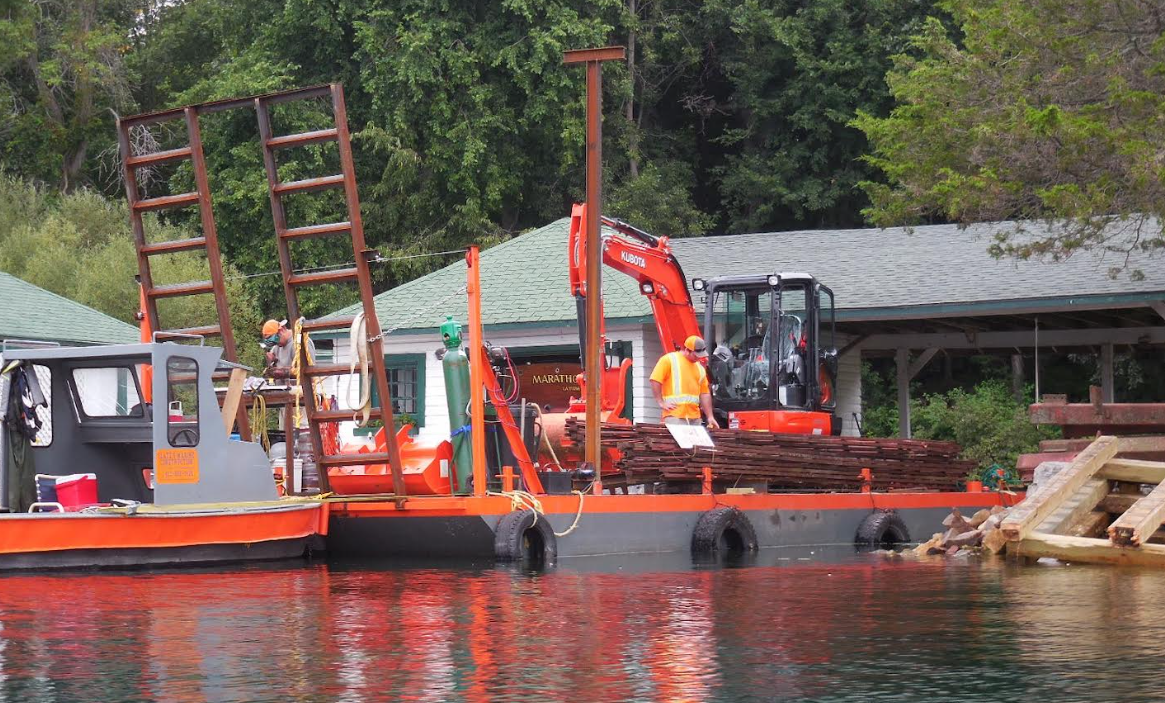
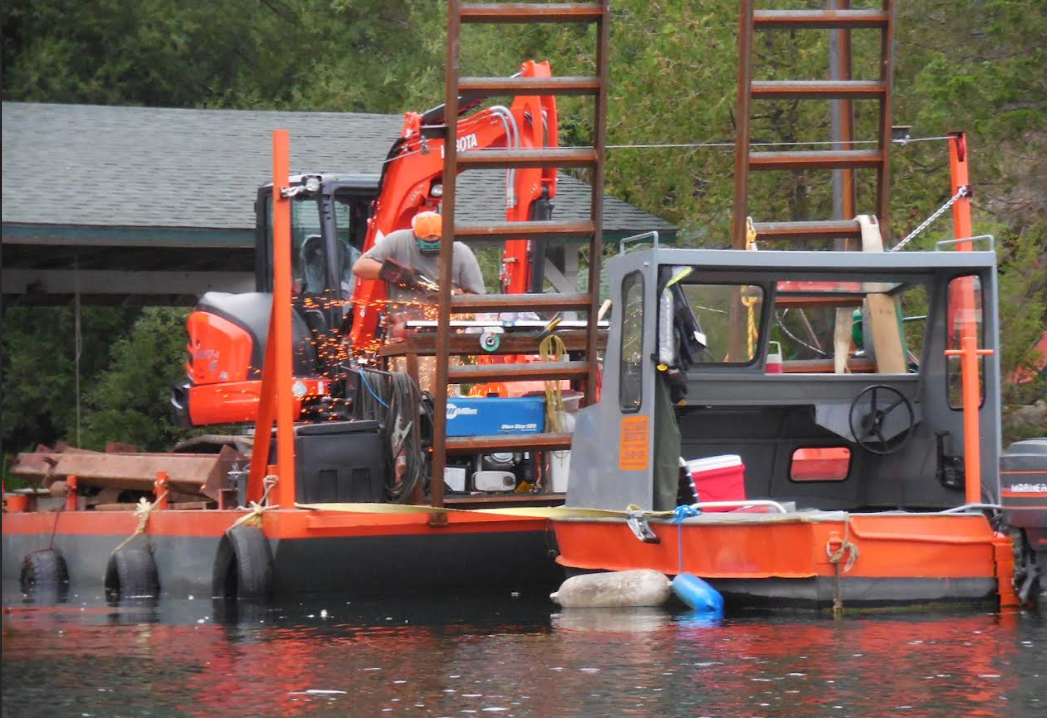
[Photos by Winifred McGowan ©2025]
Workers are using this barge as their workshop as they repair the dock damaged in the extra high water the prior year. You can see sparks flying from the welder's torch.

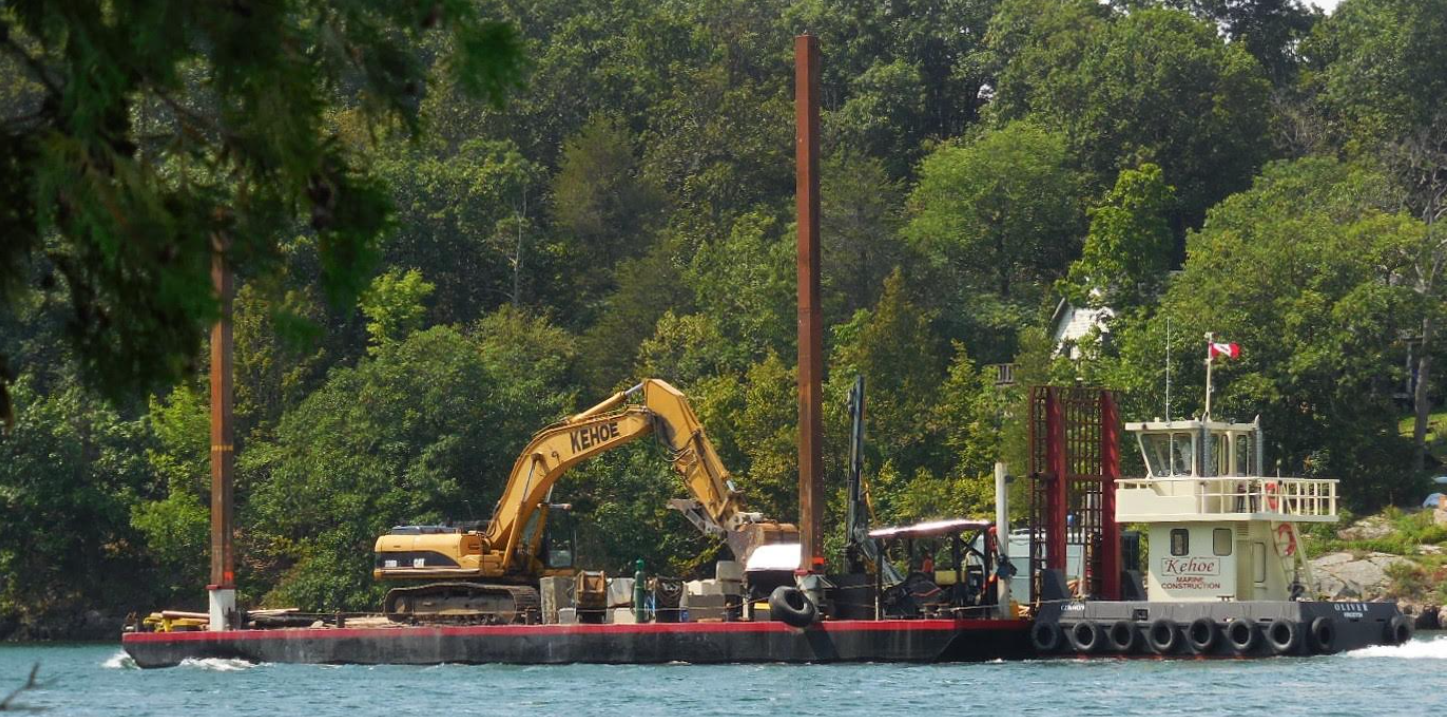
Retrieving concrete blocks from McDonald Island. [Photos by Winifred McGowan ©2025]
Several Parks Canada's docks were closed to the public in 2017 and 2018 and concrete blocks – used in 2017, both as a visual warning and to help hold the flooded docks down during the high water – were still in place. At the end of August 2018, a barge appeared. I expected it was there to do the work needed to reopen the dock in time for the busy Labour Day weekend – hurray! But no, apparently it was there to retrieve concrete blocks from each of the closed Parks island docks.

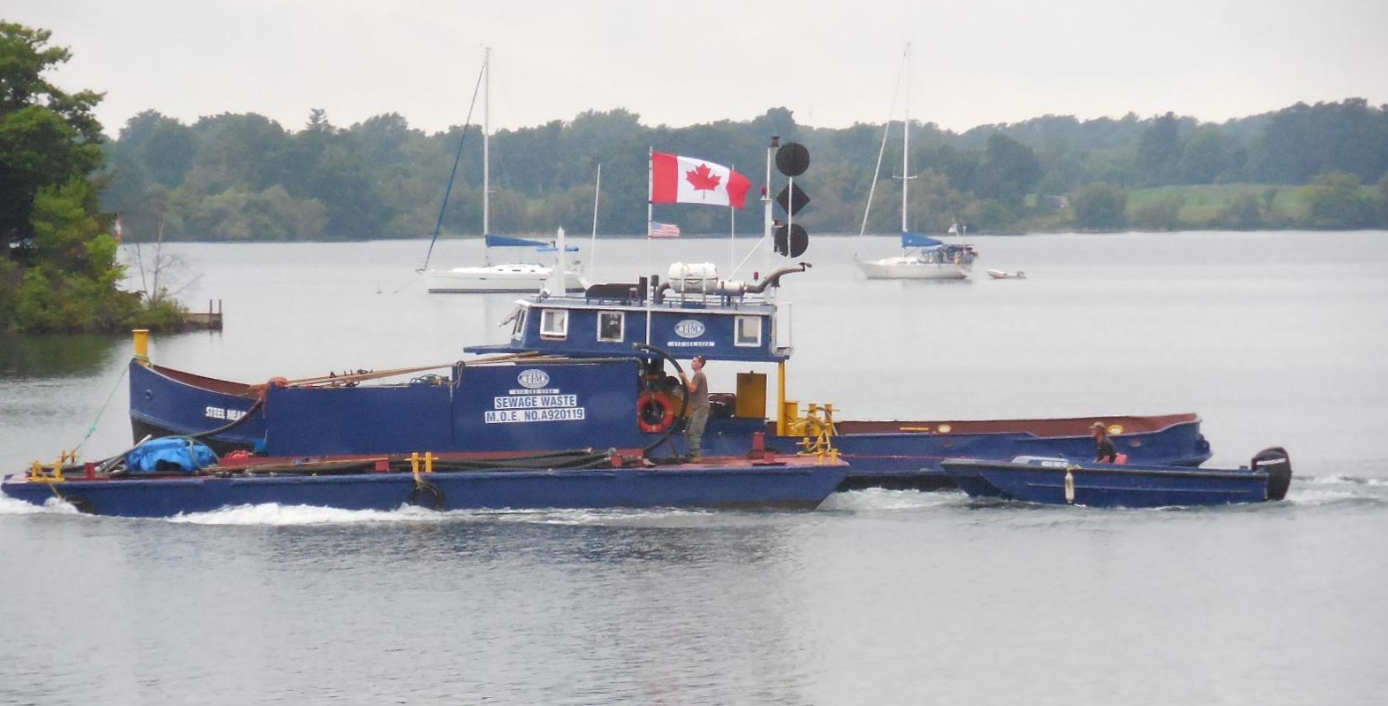
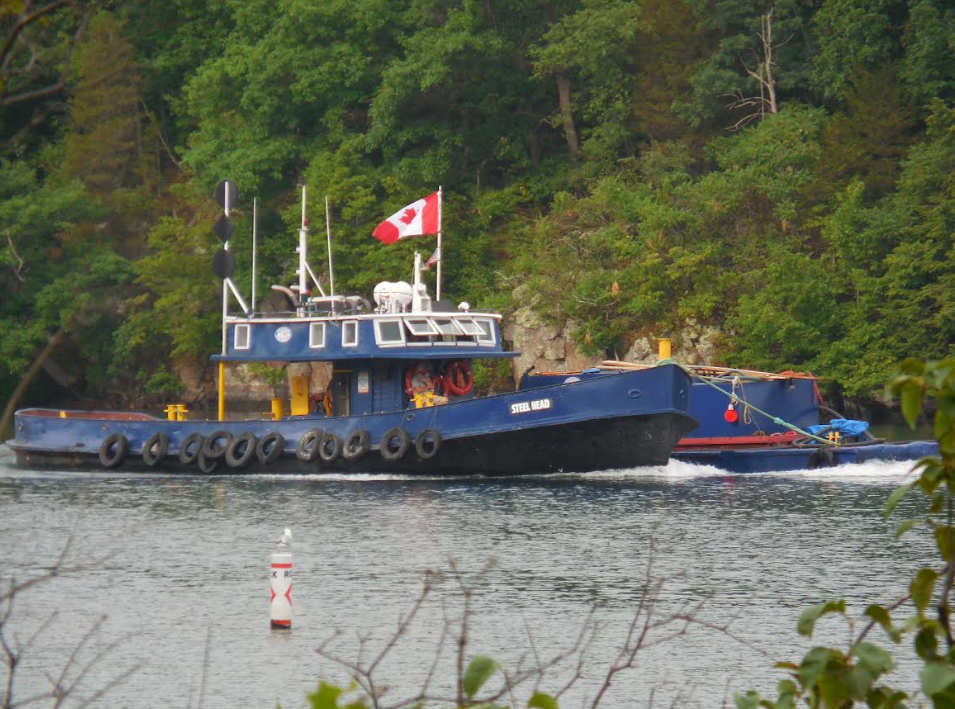
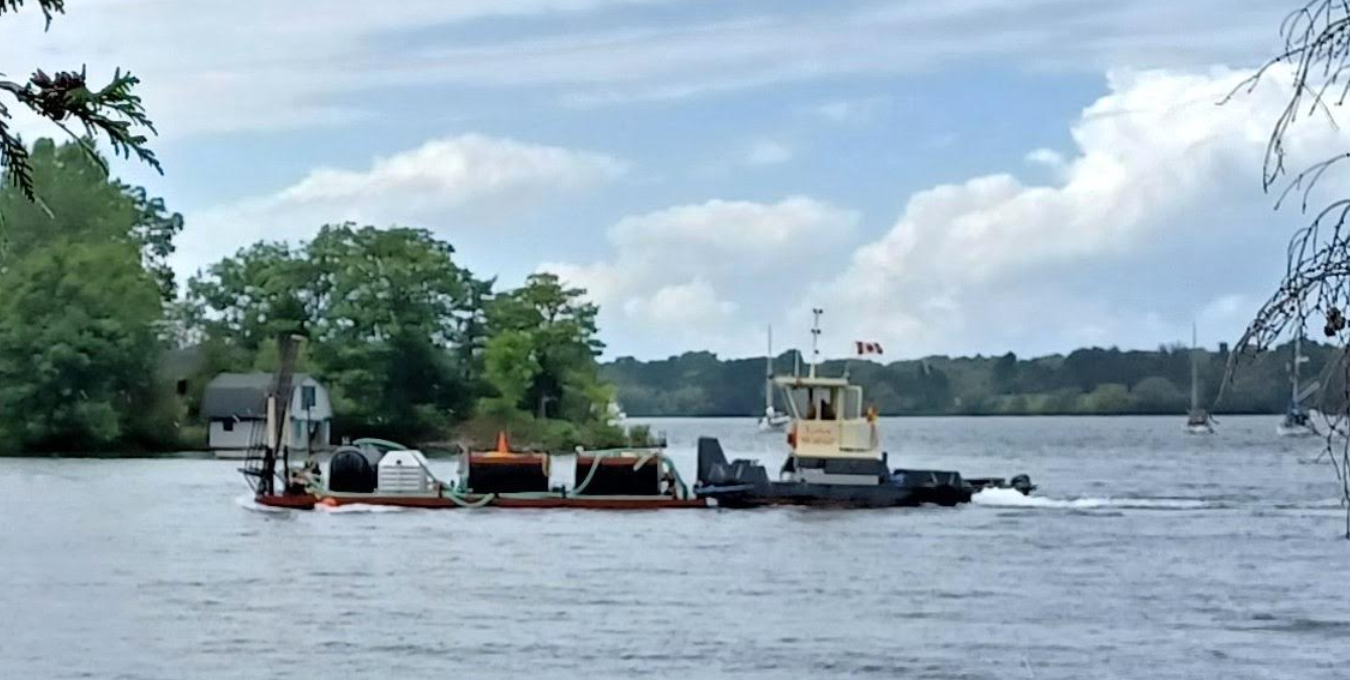
Variations of barges for pumping out holding tanks. [Photos by Winifred McGowan ©2025]
Many islands have holding tanks as the islands are small, rocky, and can't support a septic system. But the holding tanks fill up and have to be pumped out. Here are several variations of barges set up for pumping out holding tanks – note a white holding tank beside the island cottage, partially screened by some shrubs. An auxiliary boat provides closer access when the shoreline is too shallow or rocky for the barge.
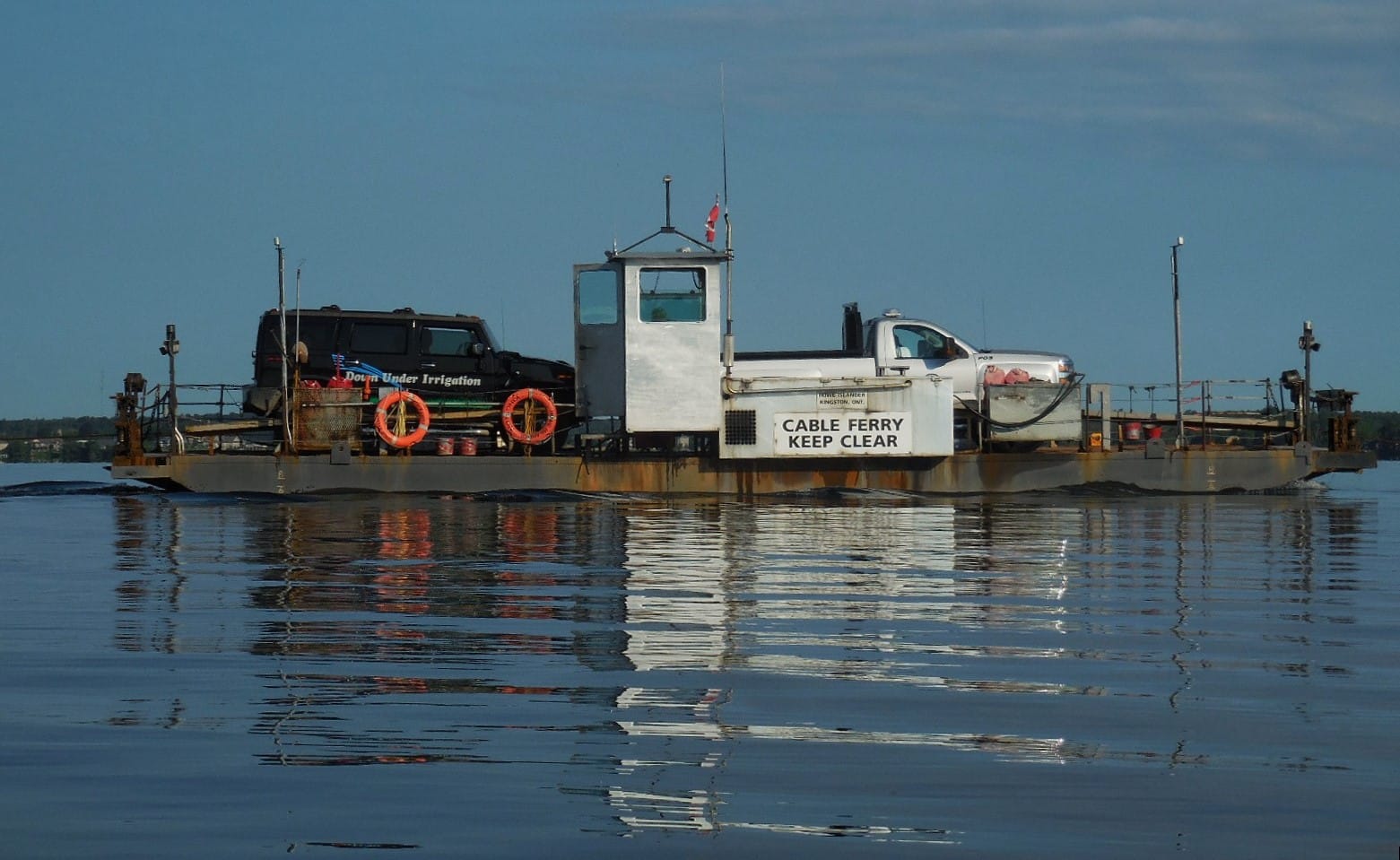
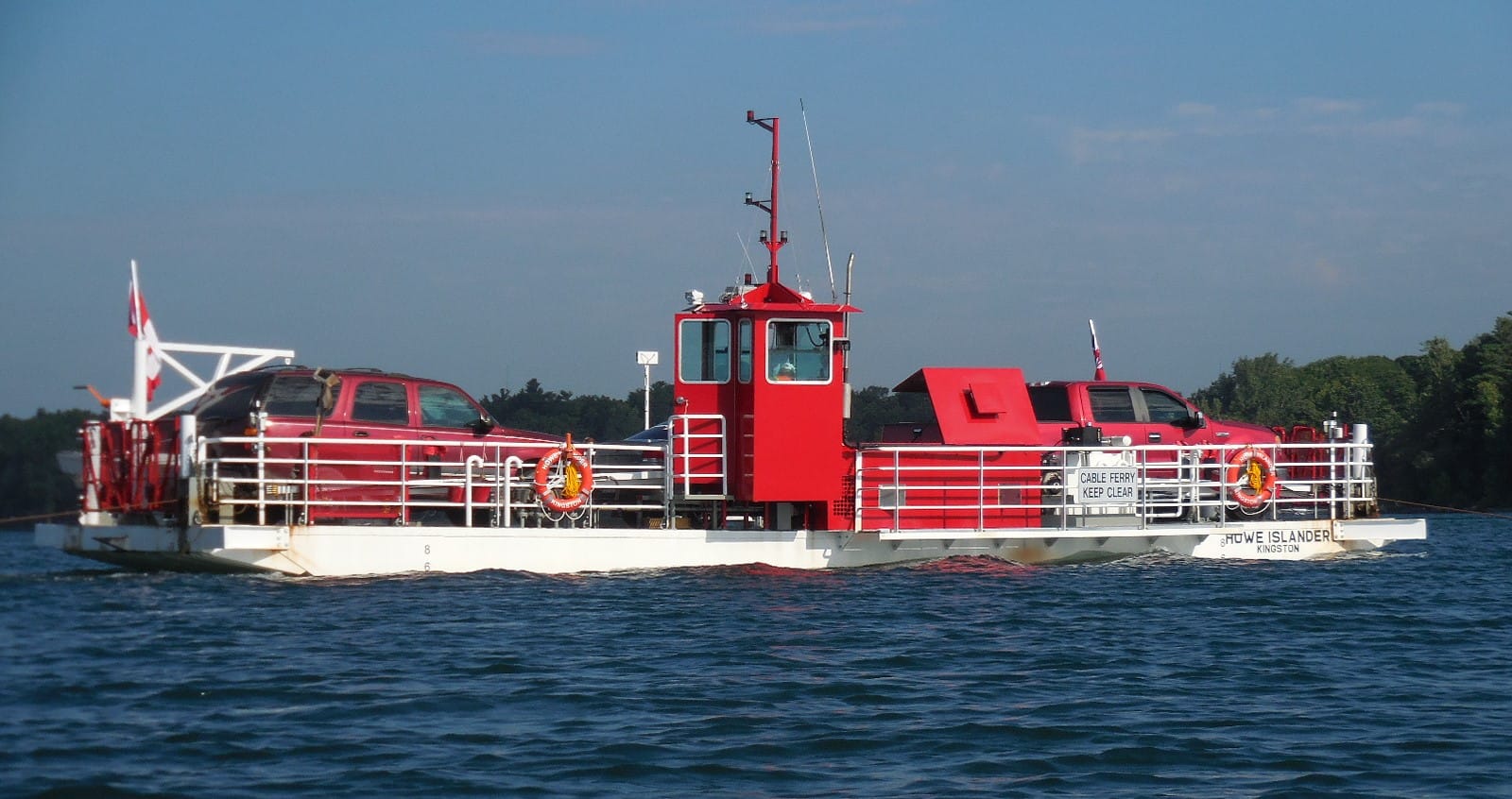
Howe Island Cable Ferry heading to Bishop's Point. [Photos by Winifred McGowan ©2025]
Howe Island Cable Ferry between the island and Bishop's Point is open year round and can ferry smaller commercial trucks to the island. There is a bubbler system to keep the water from freezing over the cable area so the ferry can continue crossing in winter. I love the way the throw-rings line up as if they are the black vehicle's tires and how the red vehicles coordinate with the red on the refurbished ferry. Who arranged it as if they planned a photo-shoot!
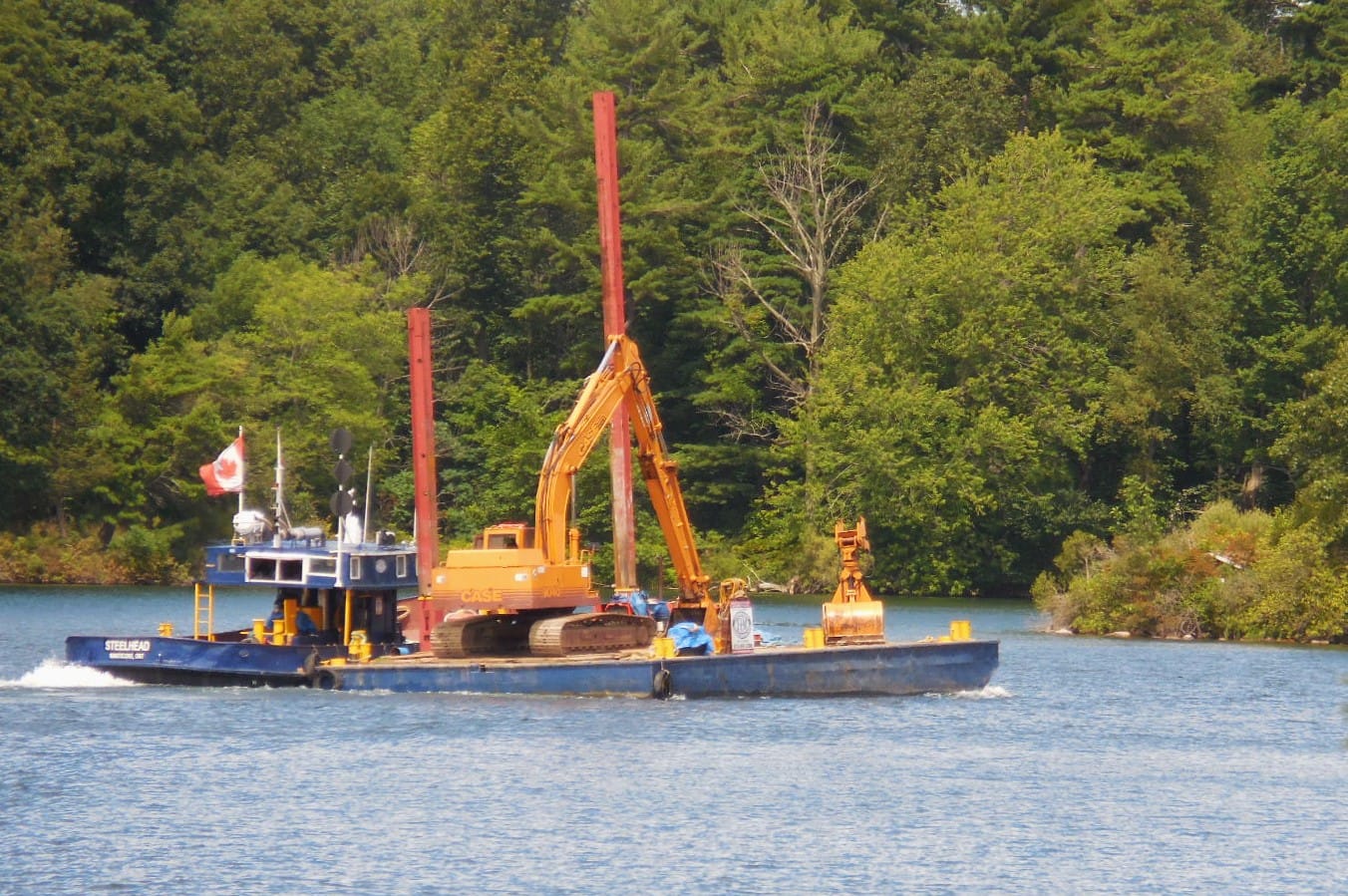
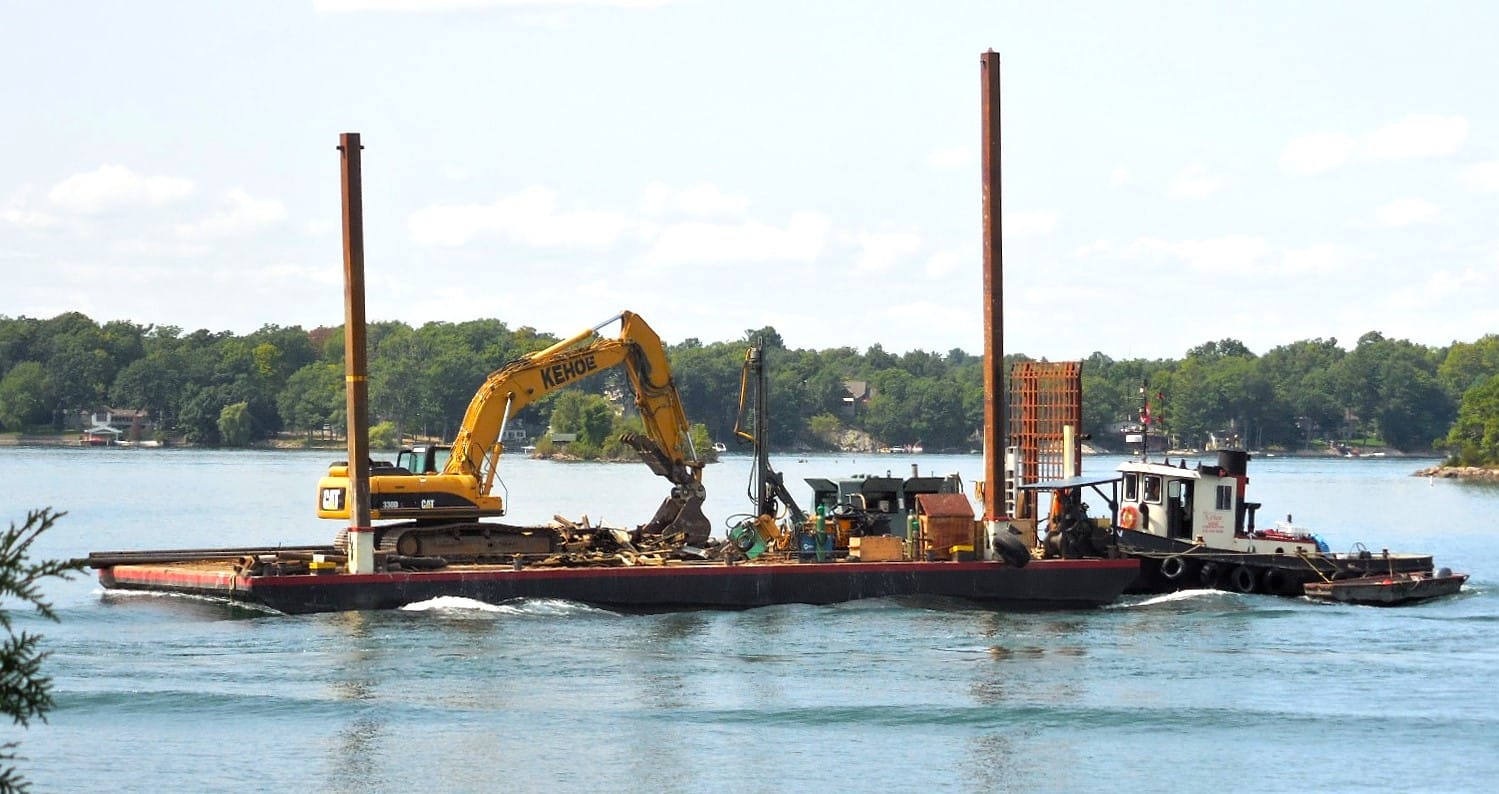
One barge brought soil to the island. Another barge carries a lot of equipment. [Photos by Winifred McGowan ©2025]
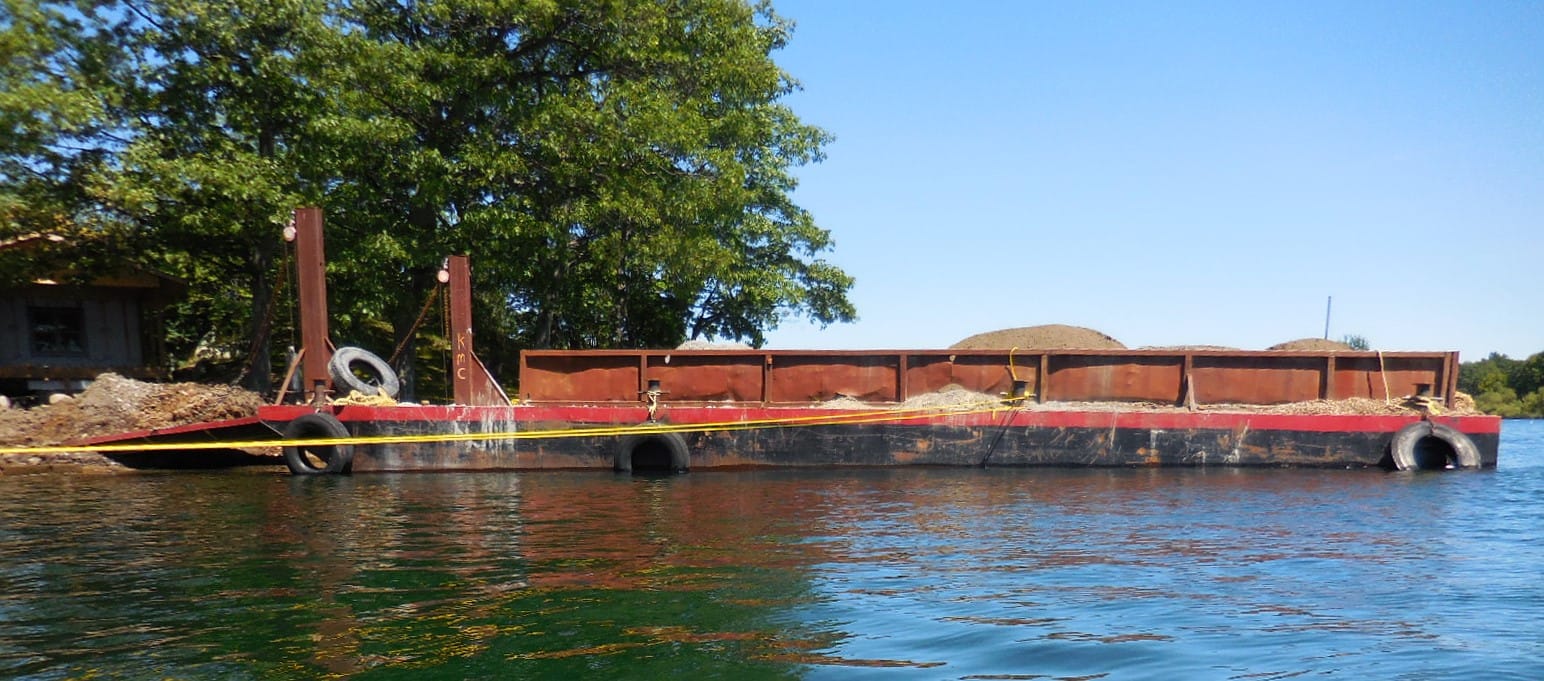
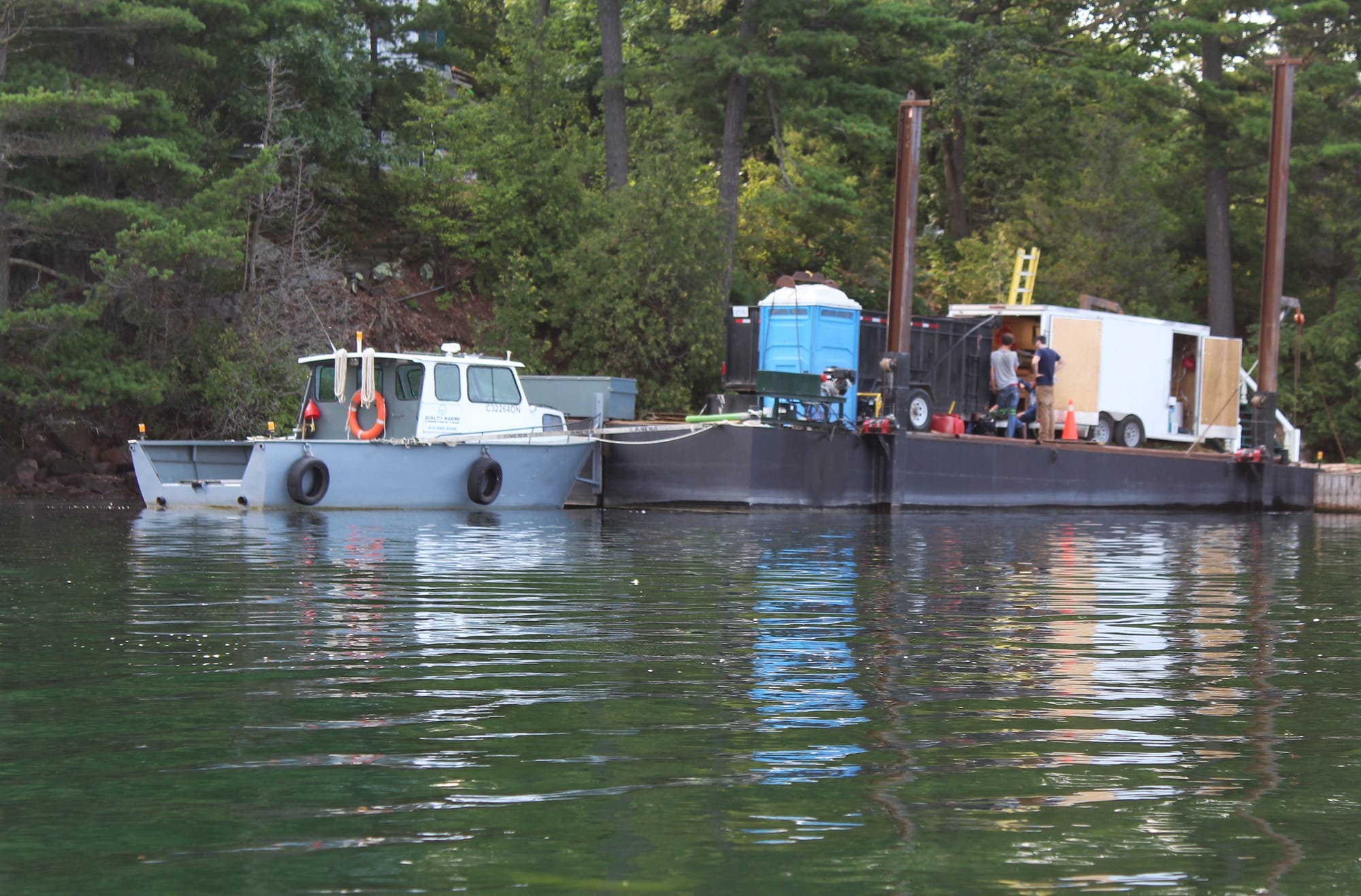
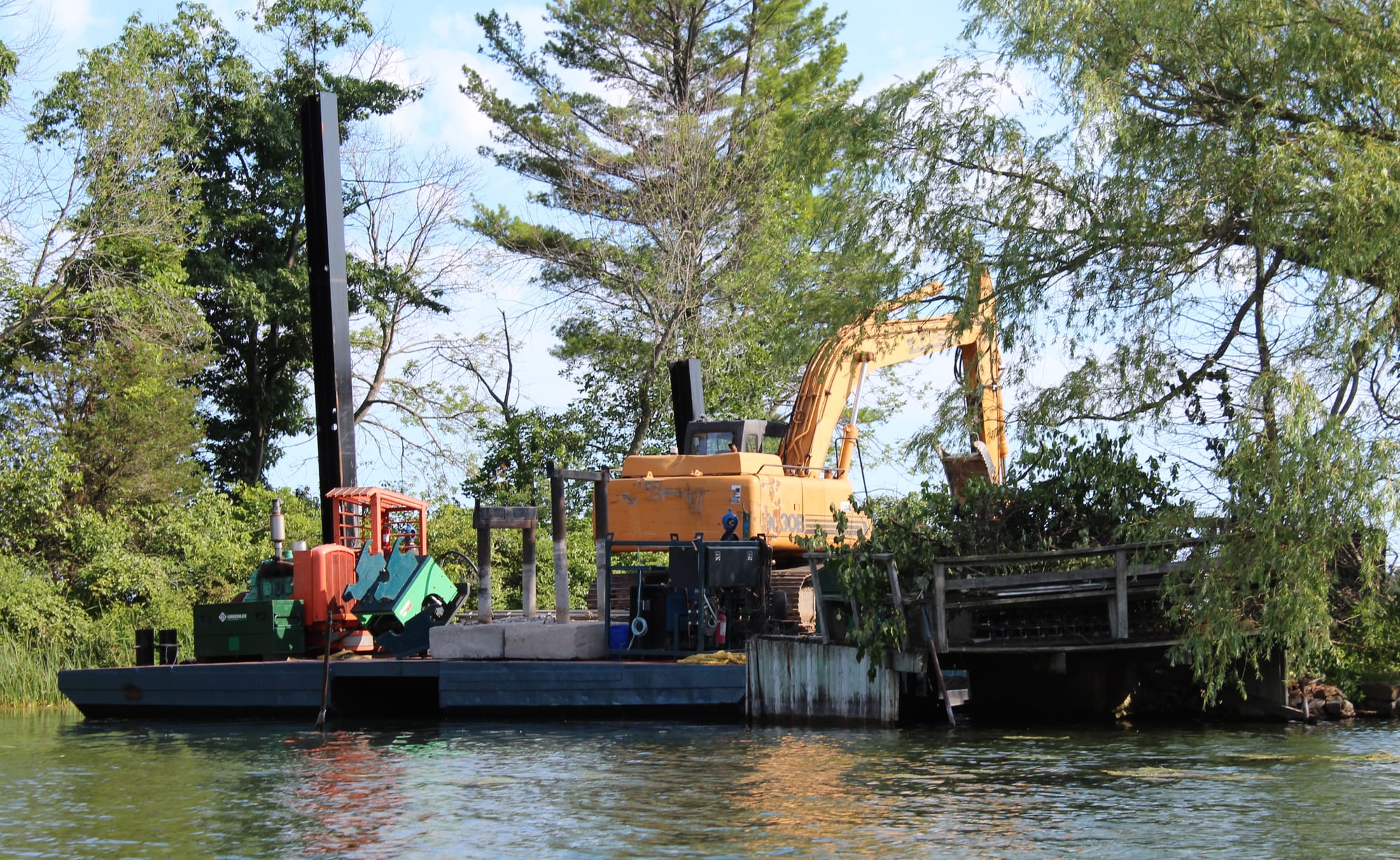
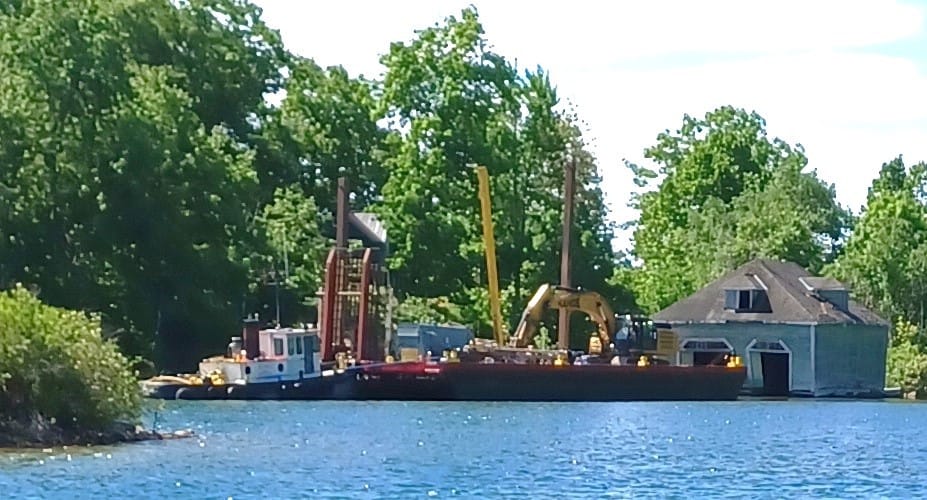
Barges carry large loads. [Photos by Winifred McGowan ©2025]
This barge brought soil to an island but not in the fast, turn-around mode seen above. Some barges carry large loads of boulders used for breakwaters, reinforcing the shoreline, or even enlarging an island. Some carry off brush and trees. The barge on the top right was the work station for re-roofing a cottage with an elaborate roofline, a job that took several days. It was heavy work carrying the new shingles and ladders up all the stairs, then lugging the tarp with the old shingles down to the dumpster, which remained on the barge.
Workers associated with the barge on the bottom left cleared the tangle of shrubs and removed the old dock to build a new dock. It's very shallow water and a wonder that the barge could be delivered. The barge on the bottom right came in for razing and removing the old boat house, one of our local landmarks.
By Winifred McGowan
Winifred (Winky) McGowan came to the islands at a young age to visit her grandmother, aunt, and sometimes her cousins, and continued coming with her parents for several years. She and her husband became owners of Little Sagastaweka Island in more recent years. Sagastaweka Island, the other island bought in the late 1800s by her great grandparents, the Finleys, was a gathering place for a large, extended family.
Winifred spent much of her working life in conservation related jobs, inspired by her love of plants, maps, and the outdoors. You can guess that the islands were part of that inspiration.
See Winky's other TI Life articles here


